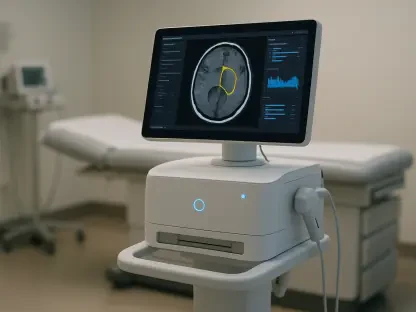In a significant legislative move, lawmakers have agreed on a bipartisan stopgap funding bill designed to maintain federal government operations while introducing noteworthy changes that affect various facets of the healthcare sector. This sweeping package includes a two-year extension of Medicare’s telehealth flexibilities, payment relief for physicians, and substantial reforms related to pharmacy benefit managers (PBMs), among other healthcare provisions. The bill aims to address long-standing issues within the U.S. healthcare landscape, but questions remain about its potential to lower costs and improve access.
Telehealth Flexibilities: A New Era in Healthcare Delivery
One of the headline items in the bill is the two-year extension of existing telehealth flexibilities under Medicare. Initially introduced during the COVID-19 pandemic, these flexibilities allowed patients to access telehealth services from their homes and permitted certain non-mental healthcare services to be offered via audio-only calls. The continuation of these rules highlights the growing recognition of telehealth as a vital component of modern healthcare delivery, especially for mental health services and for patients residing in rural areas.
These provisions have been widely supported by telehealth advocates and provider groups who argue that expanded telehealth services increase accessibility, reduce travel-related barriers to care, and ensure continuity in healthcare delivery. As a result, these changes have seen broad-based approval despite ongoing debates regarding costs and quality. The extension of telehealth flexibilities is expected to have a significant impact on patient care, particularly for those who face challenges in accessing traditional in-person services.
The ongoing support for telehealth services underscores the widespread acknowledgment of its benefits. During the pandemic, telehealth emerged as a critical tool to provide uninterrupted care while adhering to social distancing guidelines. Many patients, especially those in remote or underserved areas, benefited from the convenience and efficiency of virtual consultations. By extending these flexibilities, the bill aims to solidify telehealth’s role in the healthcare system, providing a modern solution to age-old access issues.
PBM Reforms: Transparency and Accountability
Arguably the most transformative aspect of the bill is the introduction of reforms aimed at regulating PBMs, intermediaries that negotiate drug prices between insurers and pharmaceutical companies. Under the new regulations, PBMs will be required to pass 100% of rebates from drug manufacturers to plan sponsors in Medicare and the group health market. Additionally, PBMs will be prohibited from charging Medicaid programs more for drugs than what is reimbursed to pharmacies.
The bill also mandates that PBMs provide detailed records of prescription drug spending and business practices to federal regulators and clients in Medicare and the group health market, including rebate amounts from drug manufacturers. These reforms have been championed by pharmacist associations, patient advocacy groups, and several lawmakers who face public pressure to reduce drug costs and enhance access to medications. By eliminating rebate retention, the reforms seek to diminish incentives for pharmaceutical companies to inflate drug list prices, thereby promoting transparency in PBM operations.
Despite these anticipated benefits, skepticism remains regarding the actual impact on patient costs. Critics, including industry lobbyists such as the Pharmaceutical Care Management Association (PCMA), argue that the reforms could lead to increased premiums for Medicare Part D beneficiaries and potentially reduce PBMs’ negotiating power to secure lower drug prices. However, proponents of the reforms insist that the increased transparency and accountability will ultimately benefit consumers by creating a more competitive and equitable marketplace.
The debate surrounding PBM reforms highlights the complexity of the drug pricing system in the United States. While the intention is to reduce costs and promote fairness, the intricacies of rebate negotiations and pricing strategies can lead to unintended consequences. The true impact of these reforms will likely unfold over time, as stakeholders adjust to the new regulatory landscape and assess the long-term effects on drug prices and patient access to medications.
Physician Payment Relief: Easing Financial Pressures
The bill alleviates some financial pressures on physicians by reducing the planned Medicare funding cut for the upcoming year to 0.3%, down from the initially proposed 2.8%. This change provides a much-needed respite for doctors facing increasing operational costs and highlights the ongoing conflict over how Medicare reimbursement rates are structured. Physician groups have long advocated for a more sustainable approach to reimbursement, such as linking annual increases to inflation.
While the reduction in the planned cut offers temporary relief, it does not address the underlying issues contributing to financial instability for healthcare providers. The need for a long-term solution remains a pressing concern, as physicians continue to navigate the complexities of the healthcare system and strive to provide high-quality care to their patients. Ensuring adequate compensation is critical to maintaining physician morale and preventing burnout, which ultimately impacts patient care.
Physician groups have consistently voiced concerns over the unpredictability of Medicare reimbursement rates. Fluctuations in funding can hamper long-term planning and investment in practice improvements, leading to a strained healthcare delivery system. By offering temporary relief through reduced cuts, the bill provides a short-term solution but underscores the urgent need for a comprehensive strategy to address the root causes of financial pressures on healthcare providers.
Support for Vulnerable Populations: Ensuring Access to Care
The bill includes several provisions aimed at supporting vulnerable populations and ensuring access to care. It averts cuts in Medicaid payments to hospitals that cater to vulnerable populations, thereby safeguarding essential services for those who rely on Medicaid for their healthcare needs. Additionally, the bill extends Medicare programs dedicated to improving access to healthcare services in rural regions, addressing the unique challenges faced by rural communities.
Funding for community health centers is also increased, ensuring continued support for these critical healthcare institutions. Community health centers play a vital role in providing care to underserved populations, and the additional funding will help them expand their services and reach more patients. These measures demonstrate a commitment to addressing healthcare disparities and promoting equity within the healthcare system.
By focusing on the needs of vulnerable groups, the bill aims to bridge gaps in the healthcare system that often leave marginalized communities underserved. Access to quality healthcare is a fundamental right, and by protecting funding for hospitals and community health centers, the legislation strives to uphold this principle. As healthcare disparities continue to be a pressing issue, these provisions are a step towards creating a more inclusive and equitable healthcare system.
Regulating Medicare Advantage Practices: Protecting Beneficiaries
The bill includes provisions to combat “ghost networks” in privatized Medicare plans, which occur when providers are erroneously listed as in-network in plan directories. This practice can lead to beneficiaries incurring hefty costs if they receive services from providers they believed were covered by their plan. By addressing this issue, the bill aims to protect beneficiaries and ensure they have accurate information about their coverage options.
Regulating Medicare Advantage practices is a crucial step towards greater accountability within the program. Ensuring that beneficiaries are not misled about their coverage options helps to build trust in the healthcare system and prevents unexpected financial burdens for patients. This move aligns with broader efforts to enhance transparency and protect consumers within the healthcare market.
The issue of “ghost networks” has been a persistent problem, leading to confusion and financial strain for many beneficiaries. By implementing measures to ensure accurate provider listings, the bill seeks to mitigate these challenges and provide clearer, more reliable information to patients. This initiative highlights the importance of transparency and accountability in healthcare administration, fostering a system that prioritizes patient well-being and trust.
Trends and Consensus
In a significant legislative development, lawmakers have reached a bipartisan agreement on a stopgap funding bill aimed at keeping federal government operations running smoothly. This comprehensive package also introduces important changes affecting the healthcare sector. Among the key provisions is a two-year extension of Medicare’s telehealth flexibilities, offering continuous access to telehealth services for beneficiaries. Additionally, the bill includes measures for payment relief for physicians, ensuring they receive fair compensation for their services.
Another focal point of the legislation is substantial reforms related to pharmacy benefit managers (PBMs). These intermediaries play a critical role in the pharmaceutical supply chain and their operations have been under scrutiny due to concerns about transparency and pricing practices. The reforms aim to increase accountability and oversight of PBMs, potentially leading to better drug pricing for consumers.
While the bill addresses several long-standing issues within the U.S. healthcare system, questions persist regarding its effectiveness in lowering overall healthcare costs and improving access for all Americans. Lawmakers remain hopeful that this bipartisan effort will pave the way for more comprehensive healthcare reforms in the future, but it remains to be seen how these changes will impact the healthcare landscape in the long term.









